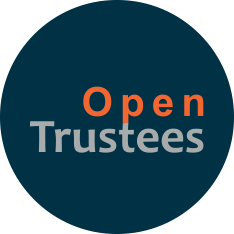UK Pensions Regulator consults on new defined benefit funding code
The Pensions Regulator (TPR) has opened its second consultation on the new DB funding framework for UK defined benefit (DB) pension schemes. On 16 December 2022, it published the response to its first consultation (see our earlier insight published on 3 October 2022 for more information on this), together with a draft DB funding code of practice, a consultation on the draft funding code, and a consultation on fast track and its proposed regulatory approach.
Funding framework
The new DB funding framework will have four main parts: (1) the scheme funding provisions in the Pension Schemes Act 2021 (not yet in force), (2) new regulations (consulted on by the Department for Work and Pensions (DWP) in the summer, but not yet in final form); (3) the new funding code; and (4) fast track.
The legislation will require trustees to set a “funding and investment strategy” (FIS) with a view to the scheme having a “low dependency on the employer” by or before the date on which the scheme actuary estimates the scheme will reach “significant maturity”. Low dependency on the employer means having sufficient assets invested in a “low-dependency investment strategy” to provide for accrued pension rights such that the scheme is not under reasonable, foreseeable, circumstances expected to need further employer contributions for those benefits. It will be possible to aim for a higher funding level; for example by targeting buy out.
In the FIS, trustees will need to set out the funding level they intend the scheme to have achieved and the investments they intend to hold by the time the scheme reaches significant maturity or the earlier date they have chosen. The FIS will need to be agreed with the employer.
The trustees will then need to prepare a “statement of strategy”. This will have two parts. Part one will be the FIS. Part two will, among other things, identify the main risks in implementing the FIS and how the trustees intend to manage them, and record progress and identify any actions needed to get the strategy back on course.
The trustees will need to consult the employer on part two of the statement of strategy and, when the statement is ready, arrange for it to be signed by the chair of trustees and sent to the Pensions Regulator.
The draft regulations define “strength of the employer covenant”, set out how it should be assessed and state that the level of risk trustees can take in relation to the investment of scheme assets and the actuarial assumptions used to calculate liabilities as the scheme moves along its journey plan to the long-term funding target set and agreed with the employer in the FIS is dependent on the strength of the employer covenant. The legislation also says that technical provisions must be calculated in a way that is actuarially consistent with the FIS.
The funding code will set out TPR’s “expectations for compliance with the legislation”. Fast track “will provide more direction and clarity on TPR’s view of a level of risk that it will tolerate”.
TPR hopes that the new funding framework will apply from 1 October 2023, to all valuations with an effective date on and after that date.
Draft Funding Code
The draft funding code covers the following :
- The new legislative requirements.
- “Low-dependency investment allocation”.
- Actuarial assumptions for a “low-dependency funding basis”.
- “Duration” (a scheme will reach “significant maturity” when it reaches the duration of its liabilities).
- Assessing the employer covenant.
- Journey planning and stress testing.
- The FIS and the statement of strategy.
- Technical provisions.
- Recovery plans.
- Investment decisions, risk management and governance, including an explanation of the link with the new requirement to have an effective system of governance (ESOG) and to complete own risk assessments (ORAs) and operational and governance considerations around leveraged liability-driven investment (LDI)).
- Roles, responsibilities and expectations of trustees and employers.
- Key documents, reporting requirements and inter-valuation requirements.
- Expectations for trustees when setting individual assumptions in a low dependency funding basis.
- An allowance for expenses in low-dependency liabilities.
Fast track and regulatory approach
The consultation on fast track and TPR’s proposed regulatory approach confirms that TPR is proceeding with the “fast track” and “bespoke” approach, but that fast track will act as a filter. It explains that fast track
“…is not risk-free for trustees. It represents TPR’s view of tolerated risk for a scheme and sets out a series of quantitative parameters that need to be met. If a scheme meets all the fast-track parameters, we are unlikely to scrutinise the valuation submission further. Where they do not meet individual parameters, the scope of our engagement will likely be limited to those areas”. However, fast track “is not designed to be a target for all schemes to reach. Trustees… will still need to be satisfied that they comply with legislation and have considered the code principles” and should “think carefully about whether fast track is right for their scheme”.
The fast-track parameters are set out in an appendix and cover the following areas.
- Technical provisions (TPs). These must be at least a minimum percentage of the scheme’s liabilities calculated on the low-dependency funding basis. The minimum percentage will depend on the duration of the scheme.
- A funding and investment stress test.
- Conditions for recovery plans and schedules of contributions. For example, no allowance should be made for future investment outperformance in the recovery plan or schedule of contributions. For a scheme that has not reached significant maturity (or earlier date chosen for reaching low dependency) the recovery plan length must not exceed six years. There are also parameters relating to increases to deficit recovery contributions, post-valuation experience and expenses.
- Low dependency funding basis assumptions.
For a submission to be fast track, the scheme actuary must confirm that “the fast-track TPs test has been calculated and the results meet fast-track parameters … also .. that the fast-track conditions for the recovery plan and schedule of contributions and the low dependency liabilities are met”. There are some differences as between open and closed schemes and some permitted simplifications for schemes with less than 100 members.
Bespoke valuations are available if schemes: “want to take more risk than available under fast track and can demonstrate that the total risk run by the scheme is supportable by the employer covenant and in line with the maturity of the scheme; cannot meet the fast-track recovery plan length based on demonstrable employer affordability constraints; or have genuinely unique employer circumstances that necessitate a different approach”. They will not be “second best” and “will not be assessed by reference to fast track”. Rather “fast track … will act as a filter for … assessment”.
TPR will take a risk-based and proportionate approach to engagement. The information that trustees must include in their statement of strategy will help TPR to filter valuations.
Fast track will also be kept separate from the funding code. As noted above, the funding code will set out TPR’s “expectations for compliance with the legislation”, while fast track “will provide more direction and clarity on TPR’s view of a level of risk that it will tolerate”. Keeping fast track separate from the Funding Code will also make it easier to change or update.
Duration of liabilities
In its first consultation, TPR suggested “duration” of liabilities as being the best way of measuring maturity. The draft regulations consulted on by the DWP say that a “scheme reaches significant maturity on the date it reaches the duration of liabilities in years specified by” TPR in the funding code, and that the duration of liabilities measure to be used for these purposes is “the weighted mean time until the payment of pensions and other benefits under the scheme, weighted by the discounted payments”.
The draft funding Code sets a duration of 12 years. However, TPR notes that the increase in gilt yields between 31 March 2021 and 31 October 2022 has (using a low-dependency discount rate of gilts +0.5%) “resulted in the duration for a scheme of typical maturity falling by around four calendar years and the time until a scheme is expected to reach duration 12, by around 8 years”. TPR acknowledges the concern this has generated and says that, although the draft funding code must reflect the draft regulations, it is aware that the DWP is giving more thought to this issue. It also suggests some ways of reducing volatility should the DWP decide to retain duration as the measure of maturity.
TPR is also discussing with the DWP whether a scheme should be allowed to adopt a lower funding standard at or after reaching significant maturity if it can rely on high-quality contingent assets to support the additional risk and, if so, whether limits should be set and how this would affect funding and investment in the years before significant maturity.
Next steps
The consultation is open until 24 March 2023. In the coming months, TPR will need to consider the feedback it receives through the consultation and further industry engagement. It will also need to update the draft funding code for any changes that the DWP makes to the draft regulations. The outcome of the Work and Pensions Committee’s enquiry into DB schemes and LDI could also affect the new framework.
TPR is updating its covenant guidance “to supplement the principles and approaches set out in the code” and “consolidate previous regulatory messages and guidance on areas including covenant monitoring, distressed employers, improving scheme security, fair treatment, asset-backed contribution arrangements, not-for-profit, non-associated multi-employer schemes”. It will be “moving away from an internal assessment based purely on covenant grades to one that better considers the three fundamental covenant pillars of cash, contingent assets, and prospects”. It plans to consult on updated guidance “in the coming months”.
There are also workstreams around how valuation documents should be submitted to TPR and the form in which the new statement of strategy should be submitted. TPR plans to engage “with industry to discuss how the information in the statement of strategy fits with the other documents and information that trustees are already required to produce … [including]… the statement of funding principles, statement of investment principles, recovery plan and schedule of contributions along with the new” ESOG and ORA requirements. It intends to ask “for schemes to provide information electronically, including information taken from other scheme documents as well as the statement of strategy. We want to explore how best to obtain information from schemes in a way that minimises any additional burden and administrative costs”.
Open Trustees comment
The new legislation, draft funding code and fast-track parameters represent an important change to DB pension scheme funding. Trustees and employers should start discussing this consultation with the scheme actuary or their actuarial adviser and consider asking for training. They should also consider whether they would like to respond to the consultation and look out for a separate consultation on updated covenant guidance.

